Over the last several years, as the number of craft breweries has grown in the US, and the number of available beers has proliferated, we’ve seen a lot of IPAs come on the market. And for good reason: America, in general, grows the best hops in the entire world (although you can get some pretty nice hops from Australia too). The hops grown in America, particularly the Pacific Northwest, are capable of producing some amazing flavors, including grapefruit, orange, berry, peach, pineapple, and just about any other magical fruit flavor you can imagine. The primary appealing attribute of hoppy beers are their intensity. I’m often amazed at the intensity of hop aroma as I’m standing by our bar, as glasses of Hayburner or Galaxy Red or Deep Cut are passed in front of me.
The downfall of these hoppy beers, however, tends to be their unsustainability. We wrote about this over a year before we opened the brewery in fact: it is very difficult to acquire substantial amounts of prized hops. (For this very reason, we need to purposefully limit production of our double IPA Deep Cut.)
I should qualify this statement as well: it may be possible to make enough IPA, except for the fact that hops, and hoppy beer, are so damned expensive. Hops are being sold and traded on forums for 2x their normal market price. A technique that enhances hop aroma in IPAs is dry hopping, which is basically dumping hops right into the finished beer. It works well, but the hops suck up a lot of beer, ruining yields, driving up cost.
People have wondered for a long time: what could unseat IPAs as the next hot trend in craft beer? The response was nearly always: sour. Of course it makes sense: the same trend that would attract beer drinkers to intense (not sweet) bitter flavors would also attract them to (not sweet) sour flavors.
This thought has raised a few doubts for us. First, the dimensions of sour are a bit more unilateral than that of hoppy. Sour doesn’t taste very much like fruit, it tends to taste more like, well, acid: usually lactic, sometimes acetic (and hopefully never like butyric). The amount of sourness in beers can be tweaked up or down, just as bitterness can be tweaked up or down in an IPA, but it’s difficult to get layered dimensions of flavor in sour beers without some other contributor: wild yeast, fruit, hops, etc.
Sour beers are also much more difficult to produce well. Sour beers often require patience, as beers age and mature, which many newer breweries just don’t have the time for. Not only that, but there is inherent risk in exposing an otherwise “normal” brewery to wild yeast and bacteria. Wild yeast and bacteria are known to be incredibly difficult to eliminate once they’ve found a hiding place in equipment (believe us - we’ve seen it happen). It’s one thing to add a sour beer to your portfolio of beers; it’s another thing entirely to have to make only sours because that’s all your brewery is capable of making since you can’t eliminate the contamination.
And so, I think it’s very unlikely that America will embrace sour beers as much as they’ve embraced IPAs; there just won’t be enough good ones to get people to switch over.
That being said – right now, we are becoming increasingly excited about the prospect of brewing wild and sour beers. We’ve just began to experiment. We brewed a Chocolate Gose for the Brewer’s Invitational festival – which was a very experimental beer, and not just because it was tart; we were trying to combine sour, salty and sweet in a single beer. We loved how the Bidwell Wild experiment turned out – not just for the character of the beer itself, but the fact that the fermentation took place using native Western New York organisms. We’re looking forward to brewing it again and aging it in wine barrels this time. We’re pitched some of that culture into our 2016 Farm to Pint beer that we called Niagara Wild (as it incorporated local malt and hops from Niagara Malt); again, this was an extremely experimental beer where we were really guessing and hoping how things would go as opposed to having a high degree of confidence. It still turned out tart, complex, and pretty tasty for a beer this young. Finally, we just released Squeezer about a month ago, which is a dry-hopped kettle soured beer, and we think it turned out pretty nice: tart, fruity, super refreshing.
Niagara Wild
The thing that’s exciting about sour beers is that they are just a whole different ballgame when it comes to the art and science of brewing. You almost need to learn the principles of brewing over again to understand what will work and what won’t. I always thought that we’d be great at brewing sour beers because of the biology involved – remember, this is what we did before we brewed. But I’m also excited about the artisanal aspect of tasting, blending, tweaking, waiting for the perfect moment when the beer is ready to be blended and served.
I can’t say we are going to brew a lot of sour beers in the future – but I do expect you’ll see more of them in the future from us. We hope you’re as excited as we are.



